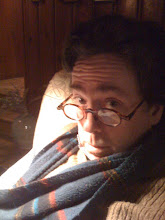"Not Goin' Home Anymore" (the name of this blog) is the title of an instrumental from the Burt Bacharach soundtrack for the movie. It starts as a slow waltz played on an accordion with a solo clarinet claiming the melody. It then turns into a lilting rumba with lush strings taking up the theme before returning to the simpler, haunting instrumentation. In the movie, it signals the arrival of Butch and Sundance and Etta to their new life in Bolivia.
Butch's disgust stems from the encroachment of civilization and the end of the frontier, a setting he hopes to regain by transplanting himself to Bolivia. Declensionists believe that the world is and has been in a state of decline— dating, usually, from some time in their personal past when things were better than they are now. My father, for example, who put up heroically with my '60s rock, thought Frank Sinatra's rise was a sign that popular music was in trouble. Of course, by the time of Sinatra’s emergence at the top of the charts in 1941 my father was thirty-five. For him, Rudy Vallée was fine, if a little silly. By 1968, he had lost his will to fight that battle and retreated to Dvorak and Rodgers & Hammerstein. For my poor old dad, Dylan, Janis, and Hendrix ran together, indistinguishable from the white noise of my garage band.
More to the point is the declensionist’s sense that things that once seemed permanent have somehow become unstable: buildings, businesses, institutions, truths, beliefs. Like Seasonal Affective Disorder, this response to the pressure of mortality leads to a desire to exert control over one’s domain or else succumb to its inevitable shrinking. So sure, there is a longing for the good old days, assuming the old days were really good, and not just old.
This past week, Jeanne-Claude died. She was an environmental artist and the collaborator of Christo, famous for their temporary artworks of wrapped landmarks and landscapes.

A photograph of Christo and Jeanne-Claude's
"Running Fences, Sonoma and Marin Counties, California, 1972-76." Photo: Jeanne-Claude/ Smithsonian American Art Museum
Her obituary in the Times noted that she said her artwork in its temporality was meant to demonstrate "the quality of love and tenderness that we human beings have for what does not last."
In the movie, Butch fought to the end for a way of life that worked just right for him. He was willing to go far afield to remake it, but the future kept chasing him down. There was no way for him to let go and no way for the future to let up.
Don't get me started on disco.


